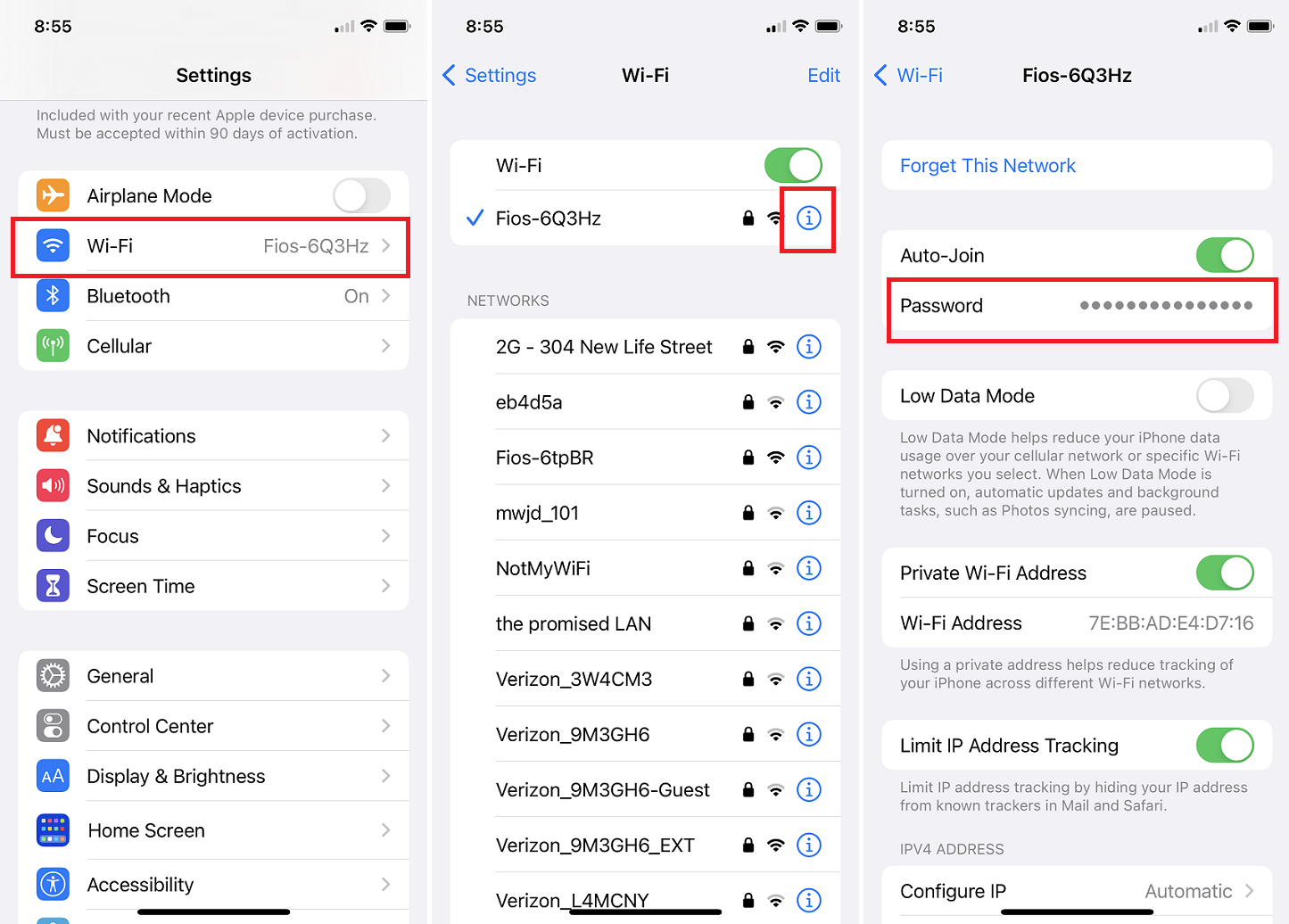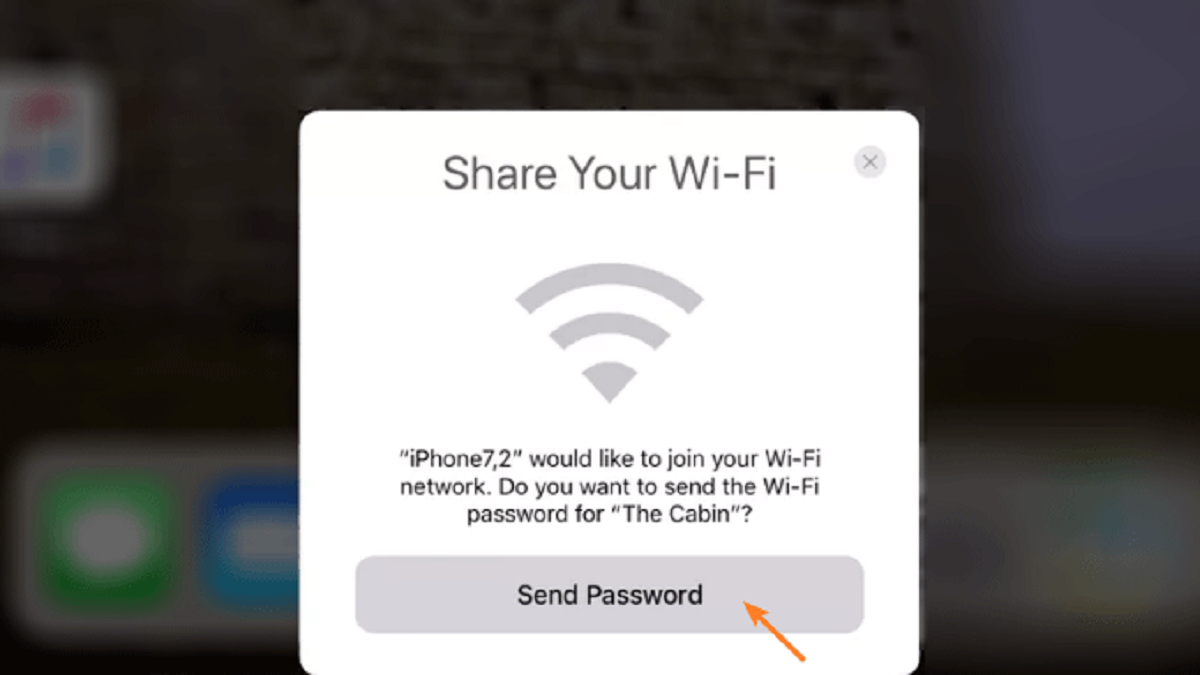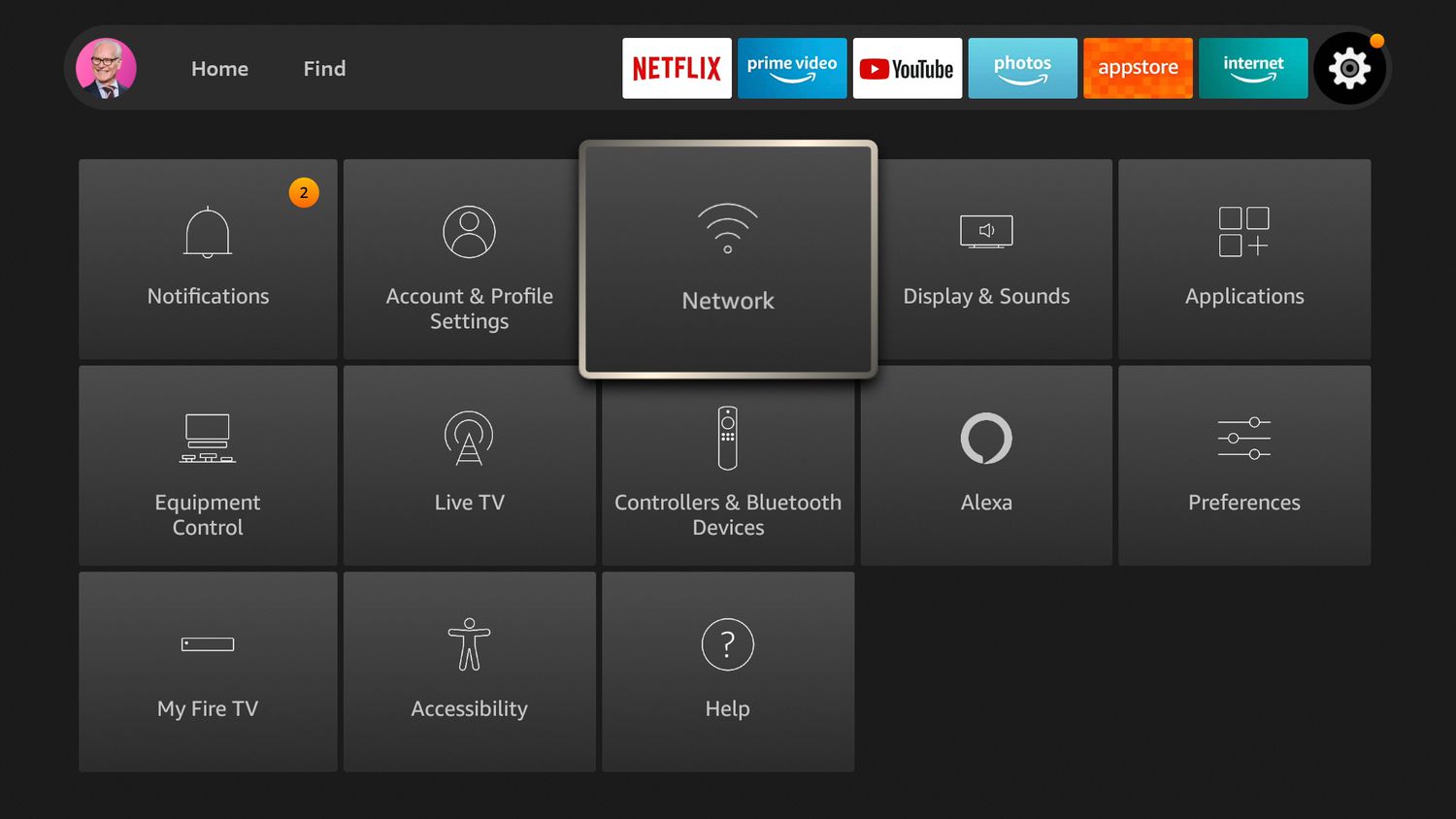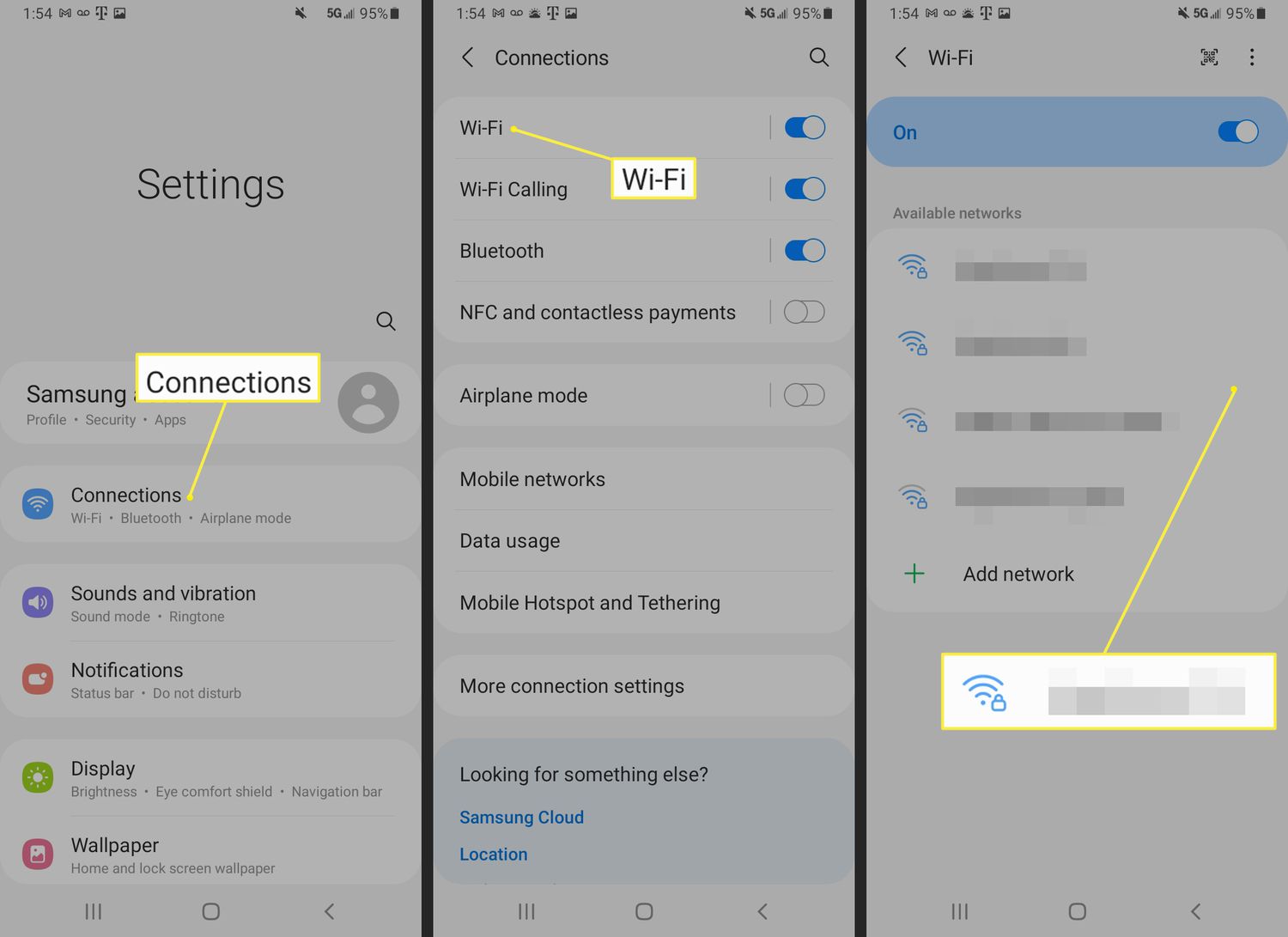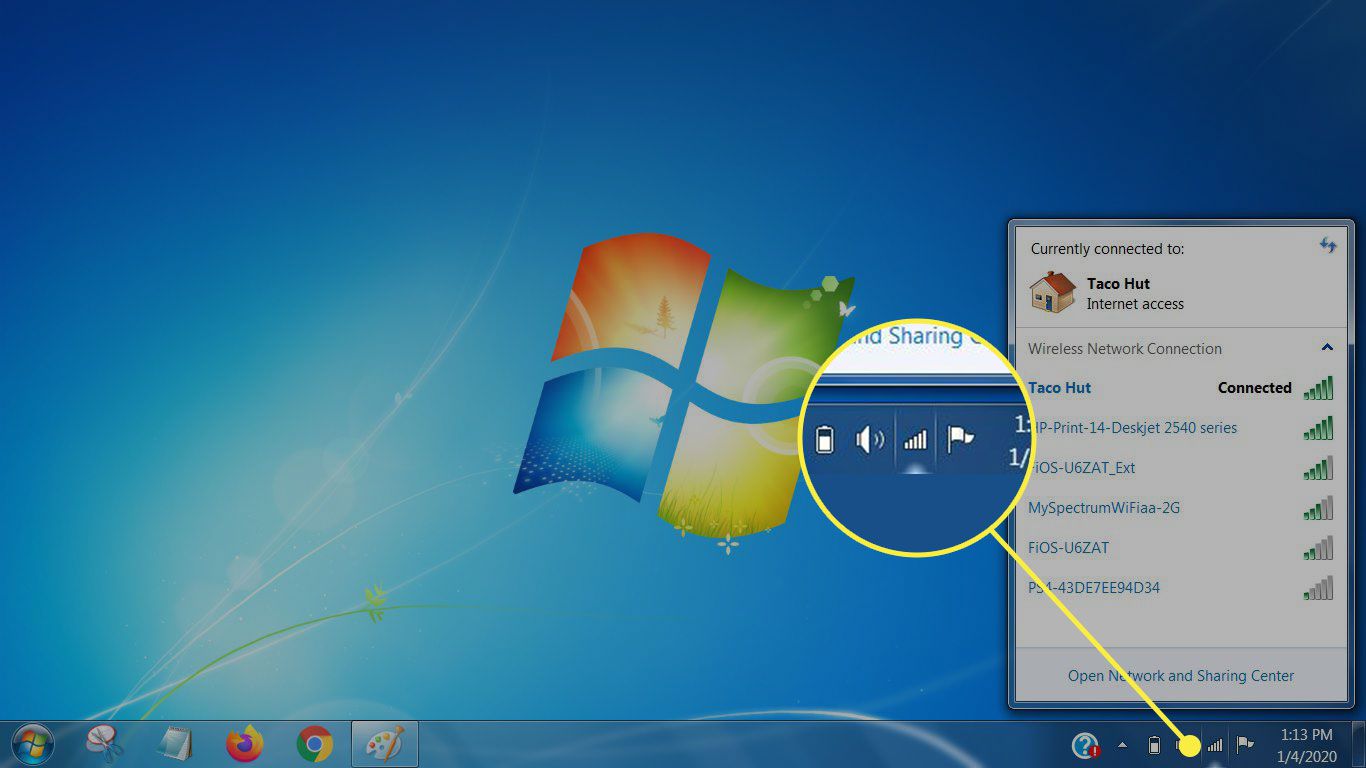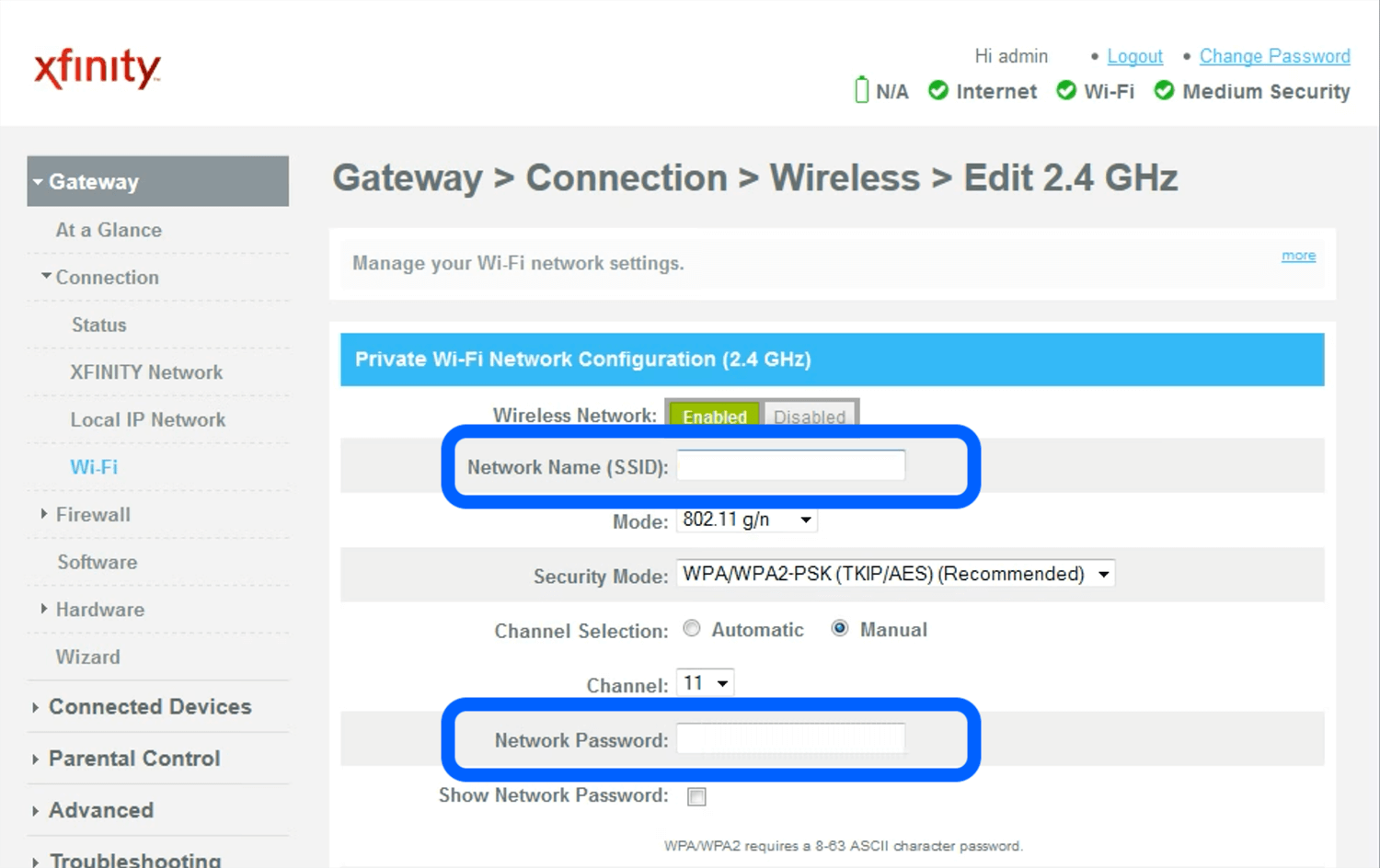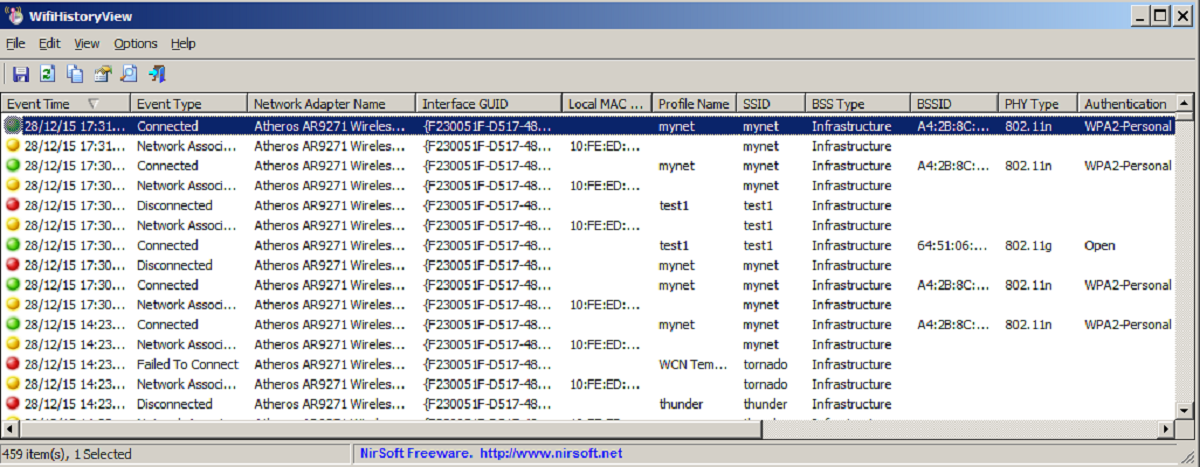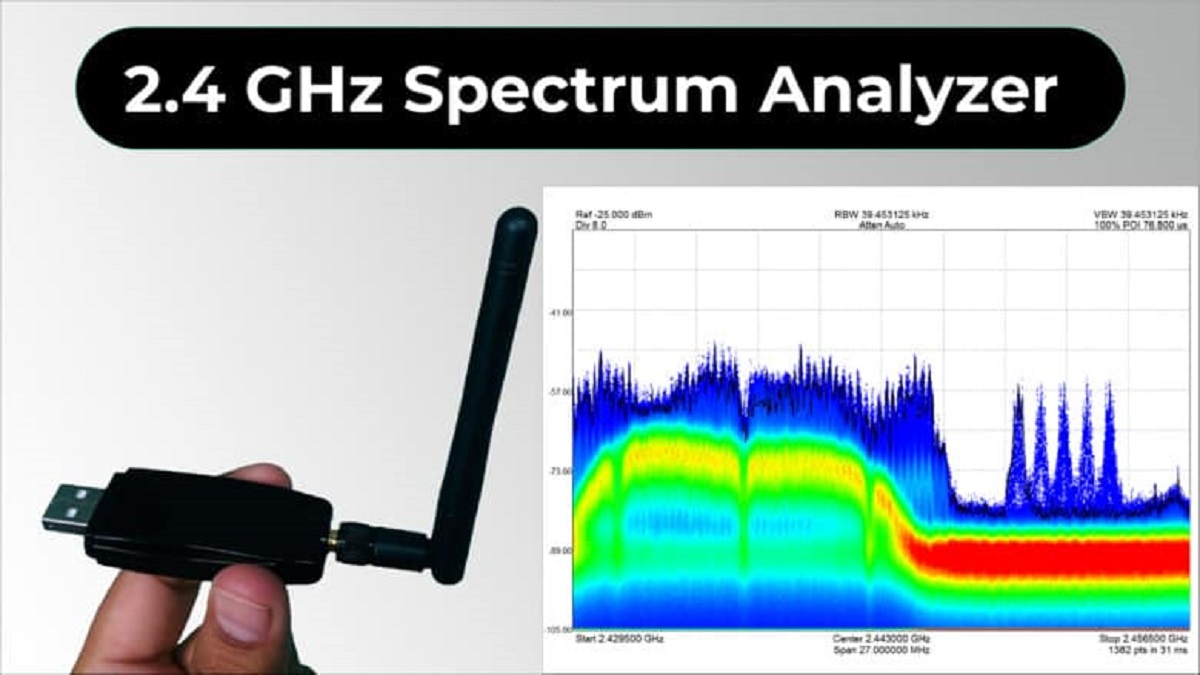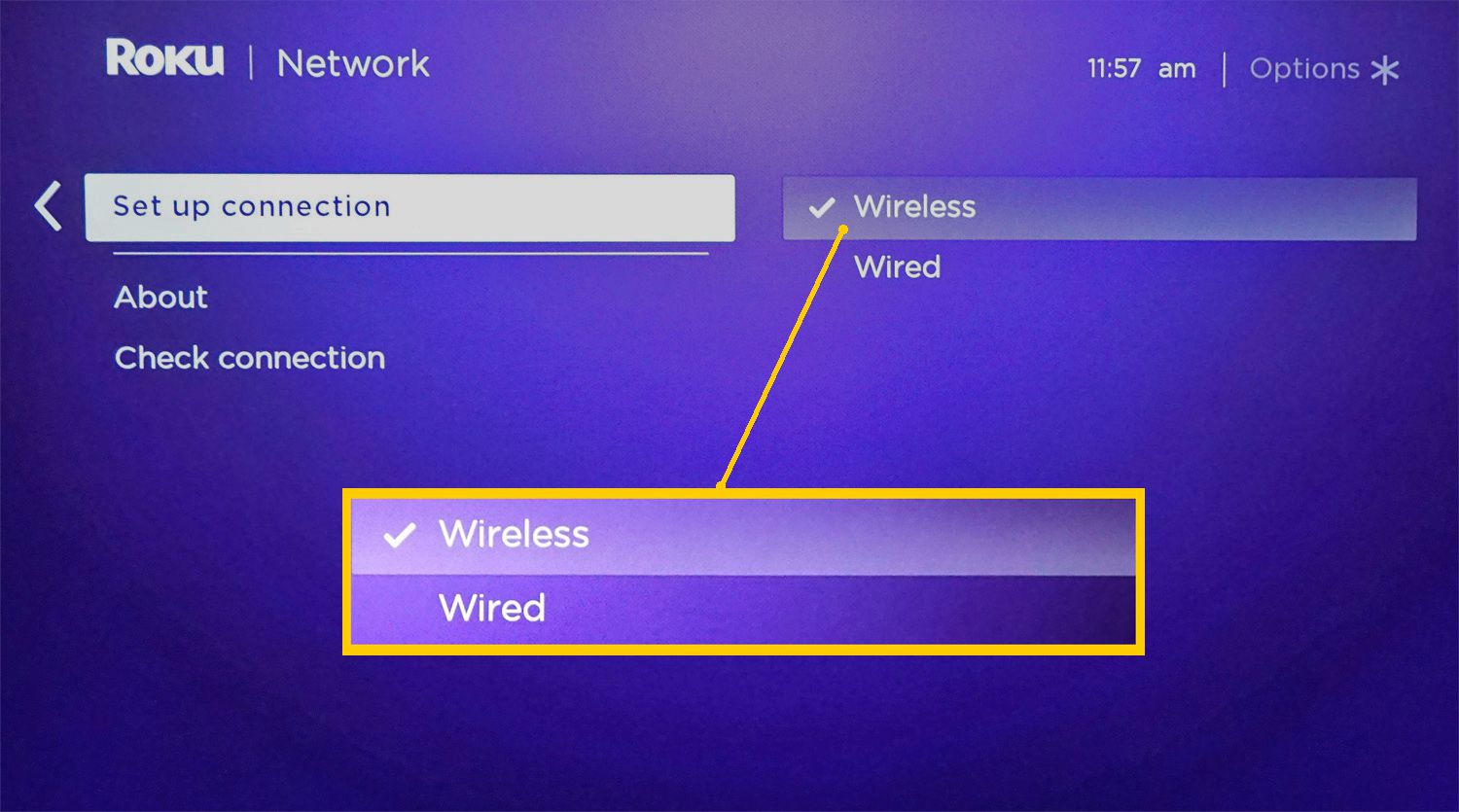Introduction
Welcome to the digital age, where staying connected is more important than ever. Whether you’re at home, at work, or on the go, having access to a reliable Wi-Fi network is essential for your productivity and entertainment. But what happens when you’re using a Wi-Fi network and can’t remember the password? Don’t worry, because in this article, we’ll guide you through the process of finding the password of the Wi-Fi network you are connected to.
Knowing your Wi-Fi password is crucial for various reasons. Firstly, it allows you to connect new devices to your network without any hassle. You won’t have to go through the process of resetting your router or contacting your service provider to retrieve the password. Secondly, it allows you to share your Wi-Fi password with others, ensuring that your friends, family, or colleagues can also enjoy a stable and secure internet connection.
There are various methods you can use to discover the Wi-Fi password of the network you are currently connected to. Some methods involve accessing your router’s admin panel, while others utilize specific operating system settings or third-party apps. In the following sections, we will take you through step-by-step instructions for each method, making it easy for you to find the password with the tools and devices at your disposal.
Before we dive into the methods, it’s important to note that these steps are intended for educational purposes and should only be used on Wi-Fi networks that you are authorized to access. Always respect the privacy and security of others when dealing with Wi-Fi passwords.
Understanding the Importance of Knowing Your Wi-Fi Password
In today’s fast-paced, interconnected world, Wi-Fi has become an integral part of our daily lives. Whether it’s for work, communication, entertainment, or simply staying informed, having a reliable and secure Wi-Fi connection is crucial. However, many of us tend to overlook the importance of knowing our Wi-Fi passwords. In this section, we’ll explore why knowing your Wi-Fi password is essential.
1. Convenience: Knowing your Wi-Fi password enables you to connect any of your devices seamlessly. Whether you’re setting up a new smartphone, tablet, laptop, or gaming console, having quick access to your Wi-Fi network makes the process much more straightforward. You won’t have to struggle with complicated setups or resort to using mobile data, saving you time and effort.
2. Sharing with Guests: When hosting guests or visitors, sharing your Wi-Fi network can make their experience more enjoyable. Instead of relying on limited cellular data or asking for network passwords, sharing your Wi-Fi allows them the freedom to stay connected and use the internet as needed. Knowing your Wi-Fi password ensures hassle-free sharing and keeps your guests happy.
3. Network Security: Being aware of your Wi-Fi password is crucial for maintaining network security. By keeping your password confidential and periodically changing it, you can minimize the risk of unauthorized access to your network. This prevents unauthorized individuals from piggybacking on your connection or accessing sensitive information stored on devices connected to your network.
4. Efficient Troubleshooting: In case you encounter any network issues or need to configure your router settings, knowing your Wi-Fi password is essential. It allows you to access your router’s admin panel, where you can make necessary adjustments, update firmware, or troubleshoot connectivity problems. This knowledge empowers you to take control of your network’s functionality and resolve any issues efficiently.
5. Peace of Mind: Finally, having your Wi-Fi password readily available brings peace of mind. You won’t have to worry about forgetting the password or resetting your router when a new device needs to connect. In emergency situations or when you need to share the password with someone quickly, you’ll have the confidence of knowing the password at a moment’s notice.
By understanding the significance of knowing your Wi-Fi password, you can make the most of your network and ensure a seamless connectivity experience. With convenience, security, troubleshooting capabilities, and peace of mind, knowing your Wi-Fi password becomes an important aspect of your digital lifestyle.
Step 1: Accessing Your Router’s Admin Panel
In order to retrieve your Wi-Fi password, the first step is to access your router’s admin panel. The admin panel is a web-based interface provided by your router’s manufacturer that allows you to configure various settings, including the Wi-Fi password. Here’s how you can access it:
- Connect your device to the Wi-Fi network for which you want to retrieve the password. It’s important to be connected to the network since accessing the admin panel requires an active connection.
- Open a web browser on your device. It can be Chrome, Firefox, Safari, or any other browser of your choice.
- In the address bar of the browser, type in the default IP address of your router. Typically, this is 192.168.1.1 or 192.168.0.1. If these addresses don’t work, you can consult the router’s manual or check the manufacturer’s website for the correct IP address.
- Press Enter or Return on your keyboard to load the admin panel login page.
- You will be prompted to enter your router’s admin username and password. This information is usually provided on the router itself or in the documentation that came with it. If you haven’t changed the default login credentials, you can try combinations like “admin” for both the username and password, or consult the router’s manual for the correct login details. Remember, it’s essential to change the default login credentials for security reasons.
- Once you have entered the correct login details, click on the Login or Submit button to proceed.
After successfully logging into your router’s admin panel, you are now ready to proceed to the next step in retrieving your Wi-Fi password. It’s worth noting that the admin panel interface and options may vary depending on the router model and manufacturer. If you encounter any difficulties accessing the admin panel or locating the Wi-Fi password, you may need to consult the router’s manual or the manufacturer’s support website for specific guidance.
Step 2: Locating the Wi-Fi Password within the Admin Panel
Now that you have successfully accessed your router’s admin panel, it’s time to locate the Wi-Fi password. The exact location of the Wi-Fi password may vary depending on the router’s interface, but here are a few common places where you can find it:
- Wireless Settings: Look for a tab or menu option labeled “Wireless” or “Wireless Settings.” Within this section, you should find the Wi-Fi password displayed or labeled as “Password.” It may be in plain text or hidden with asterisks. Note that some routers may separate the 2.4GHz and 5GHz network passwords, so make sure to check both if applicable.
- Security or Security Settings: Check for a section related to security settings, which often includes encryption, authentication, and password settings. Within this section, you should find the Wi-Fi password listed as “Password” or “Passphrase.”
- Network or Wi-Fi Settings: Some routers may have a dedicated “Network” or “Wi-Fi” settings menu. Explore this menu to find the Wi-Fi password field.
- Status or Summary: In some cases, the Wi-Fi password may be displayed on the router’s status or summary page, which provides an overview of the network settings.
- Advanced Settings: For more advanced routers, there might be an “Advanced Settings” or “Advanced” tab that contains additional options, including the Wi-Fi password field.
Once you have located the Wi-Fi password within the admin panel, take note of it or copy it to a secure location. If the password is not displayed in clear text, you can usually unmask it by clicking a show/hide button or an eye icon next to the password field.
Remember to keep your Wi-Fi password confidential and secure. Avoid sharing it with unauthorized individuals to protect your network from potential security risks.
If you are unable to locate the Wi-Fi password within the admin panel or encountering difficulties, refer to your router’s manual or the manufacturer’s support website for specific instructions based on your router model. They can provide further guidance on finding the Wi-Fi password or resolving any issues you may encounter.
Method 1: Checking the Wi-Fi Password on Your Router’s Sticker
If you’re looking for a quick and easy way to find your Wi-Fi password, one of the simplest methods is to check the sticker on your router. Many router manufacturers provide a sticker on the device itself that displays the essential information, including the Wi-Fi password. Here’s how to use this method:
- Locate your Wi-Fi router. It is usually positioned in a central area of your home or near where your internet connection enters the premises.
- Take a closer look at the router and search for a sticker or label attached to it. This sticker typically includes important details about your router, such as the model number, serial number, and Wi-Fi SSID (network name).
- Check the sticker for a specific field that indicates the Wi-Fi password. It may be labeled as “Wireless Key,” “Network Key,” “Wi-Fi Password,” or simply “Password.”
- Take note of the Wi-Fi password displayed on the sticker. If the password is obscured with asterisks, you can try checking if there is a separate field that provides instructions on how to reveal the password, such as pressing a button on the router or downloading a mobile app.
Once you have the Wi-Fi password from the router’s sticker, you can use it to connect any of your devices to your Wi-Fi network. Remember to treat this password as sensitive information and store it securely, avoiding sharing it with unauthorized individuals.
It’s important to note that not all routers have a sticker with the Wi-Fi password information. Some manufacturers may opt to provide this information through other means, such as displaying it in the router’s admin panel or providing a separate card or document during the initial setup process. If you can’t find the Wi-Fi password on your router’s sticker, refer to other methods in this article to retrieve it.
Method 2: Viewing the Wi-Fi Password on Windows
If you are using a Windows operating system, there is a built-in method that allows you to view the Wi-Fi password of the network you are currently connected to. Here’s how you can do it:
- On your Windows computer or laptop, right-click on the network icon located in the taskbar (usually in the bottom right corner).
- A menu will appear, choose “Open Network & Internet Settings” or “Open Network and Sharing Center” (depending on your Windows version).
- In the Network settings or Network and Sharing Center window, look for the “Wi-Fi” or “Change adapter settings” option.
- Click on the Wi-Fi network name to which you are connected. A new window will open.
- In the Wi-Fi Status window, click on the “Wireless Properties” button.
- A dialog box will appear, navigate to the “Security” tab.
- In the Security tab, check the “Show characters” box next to the Network Security Key field.
- The Wi-Fi password will now be displayed in the Network Security Key field.
Make sure to take note of the Wi-Fi password displayed or copy it to a secure location. You can use this password to connect other devices to the same Wi-Fi network if needed.
If you are not currently connected to the Wi-Fi network for which you want to view the password, you might need administrative access to the computer to perform this method. Additionally, this method may not work for Wi-Fi networks that are hidden or for networks where you do not have the necessary permissions.
Remember to keep the Wi-Fi password private and only share it with authorized individuals who need access to your network.
Method 3: Finding the Wi-Fi Password on macOS
If you are using a macOS device such as a MacBook or iMac, retrieving the Wi-Fi password of the network you are connected to is a straightforward process. Follow these steps to find the Wi-Fi password on macOS:
- Click on the Wi-Fi icon located in the menu bar at the top-right corner of the screen. The Wi-Fi menu will appear, showing a list of available networks.
- From the Wi-Fi menu, select “Open Network Preferences” or “Open Network Preferences…”. This will open the Network Preferences window.
- In the Network Preferences window, select the Wi-Fi network for which you want to find the password from the list on the left-hand side.
- Click on the “Advanced…” button, usually found at the bottom-right corner of the window.
- A new window will open. Navigate to the “Wi-Fi” or “Airport” tab in this window.
- In the Wi-Fi or Airport tab, you will see a list of preferred networks. Select the network for which you want to find the password.
- Click on the small checkbox next to “Show password”. A prompt will appear asking you to enter your macOS account password.
- Enter your account password and click on the “OK” button.
- The Wi-Fi password will now be displayed in the password field.
Make sure to take note of the Wi-Fi password or copy it to a secure location. You can use this password to connect other devices to the same Wi-Fi network.
Please note that administrative privileges or access to your macOS account might be required to perform this method. Additionally, this method may not work for Wi-Fi networks where you do not have the necessary permissions or for networks that are hidden.
Remember to keep the Wi-Fi password confidential and only share it with authorized individuals who need access to your network.
Method 4: Using Third-Party Apps on Android
If you have an Android device, you can use third-party apps to retrieve the Wi-Fi password of the network you are connected to. These apps provide an easy and convenient way to view the saved Wi-Fi passwords on your device. Here’s how you can use third-party apps to find the Wi-Fi password on Android:
- Open the Google Play Store on your Android device.
- In the search bar, type “Wi-Fi password recovery” or “Wi-Fi key recovery” and search for available apps. There are several apps available that can help you retrieve your Wi-Fi password, such as “Wifi Key Recovery” or “WiFi Password Show.”
- Select a reputable app from the search results and install it on your device.
- Once the app is installed, open it on your Android device.
- The app will scan your device for saved Wi-Fi networks and display their SSID (network name) and password.
- Find the Wi-Fi network for which you want to retrieve the password and note it down or copy it to a secure location.
It’s important to note that using third-party apps to retrieve Wi-Fi passwords may require root access or administrative permissions on your Android device. Additionally, be cautious when downloading and installing apps from unknown sources, as they may pose a security risk.
Remember to keep the Wi-Fi password confidential and share it only with authorized individuals who need access to your network.
If you are uncomfortable using third-party apps or encounter any issues, you can explore other methods mentioned in this article to retrieve the Wi-Fi password on your Android device.
Method 5: Retrieving the Wi-Fi Password on iOS
If you’re using an iPhone or iPad, retrieving the Wi-Fi password of the network you are connected to can be done directly within the iOS settings. Here’s how you can find the Wi-Fi password on iOS:
- Open the “Settings” app on your iOS device.
- Scroll down and tap on “Wi-Fi.”
- Under the list of available Wi-Fi networks, you will see the network you are currently connected to. Tap on the small “i” button next to the network name to access its details.
- In the Wi-Fi network details, you will find various information about the network, including the network name (SSID), IP address, subnet mask, and more.
- Tap on the “Wi-Fi Password” field. A prompt will appear, asking you to authenticate with Face ID, Touch ID, or your device passcode.
- Authenticate using the method of your choice.
- Once authenticated, the Wi-Fi password will be displayed in the “Wi-Fi Password” field. You can take note of it or copy it to a secure location.
Make sure to keep the Wi-Fi password confidential and only share it with authorized individuals who need access to your network.
It’s important to note that this method may not work for all Wi-Fi networks, particularly for networks where you do not have the necessary permissions or for networks that are hidden.
By following these steps, you can easily retrieve the Wi-Fi password on your iOS device without the need for any additional apps or tools.
Method 6: Using Command Prompt on Windows
If you prefer a command-line interface, you can use the Command Prompt on Windows to retrieve the Wi-Fi password of the network you are connected to. Here’s how you can do it:
- Open Command Prompt by typing “Command Prompt” in the search bar or by pressing the Windows key and R together, then typing “cmd” and pressing Enter.
- In the Command Prompt window, type the following command:
netsh wlan show profile. - A list of the Wi-Fi profiles saved on your computer will be displayed. Look for the profile name of the network for which you want to retrieve the password.
- Once you have found the profile name, type the following command to display the password:
netsh wlan show profile name="PROFILE NAME" key=clear, replacingPROFILE NAMEwith the actual profile name of the network. - Press Enter to execute the command.
- Scroll through the output until you find the “Key Content” field. The Wi-Fi password will be displayed next to it.
Make sure to take note of the Wi-Fi password or copy it to a secure location. You can use this password to connect other devices to the same Wi-Fi network.
Using Command Prompt to retrieve the Wi-Fi password requires administrative privileges on your Windows computer. Additionally, this method may not work for Wi-Fi networks where you do not have the necessary permissions or for networks that are hidden.
By following these steps and utilizing the Command Prompt, you can easily retrieve the Wi-Fi password on your Windows computer.
Method 7: Recovering the Wi-Fi Password on macOS through Keychain Access
On macOS, you can use the Keychain Access application to recover the Wi-Fi password of the network you are connected to. The Keychain Access stores various passwords and login credentials on your Mac, including Wi-Fi passwords. Here’s how you can retrieve the Wi-Fi password using Keychain Access:
- Open the “Finder” on your Mac and click on “Applications.”
- Scroll down and open the “Utilities” folder.
- Within the Utilities folder, locate and open “Keychain Access.”
- Once Keychain Access is open, navigate to the “Passwords” category on the left-hand side.
- In the list of passwords, look for the Wi-Fi network name you want to retrieve the password for.
- Double-click on the Wi-Fi network name to open the password details.
- In the password details, check the box next to “Show password.”
- A pop-up window will appear asking you to enter your macOS account password.
- Enter your macOS account password and click on the “Allow” button.
- The Wi-Fi password will now be revealed and displayed in the password details window.
Make sure to take note of the Wi-Fi password or copy it to a secure location. You can use this password to connect other devices to the same Wi-Fi network.
Using Keychain Access to retrieve the Wi-Fi password does not require any additional installations or software. It leverages the built-in functionality of macOS to provide a secure and convenient way to access saved passwords.
By following these steps, you can easily recover the Wi-Fi password on your macOS device using Keychain Access.
Method 8: Utilizing Terminal on macOS with a Command Line
If you prefer using the Terminal and command-line interface, you can retrieve the Wi-Fi password on macOS by executing a specific command. Here’s how you can utilize Terminal to find the Wi-Fi password:
- Open the “Finder” on your Mac and click on “Applications”.
- Scroll down and open the “Utilities” folder.
- Within the Utilities folder, locate and open “Terminal”.
- Once Terminal is open, type the following command:
security find-generic-password -ga "NETWORK NAME" | grep "password:", replacingNETWORK NAMEwith the actual name of the Wi-Fi network you want to retrieve the password for. - Press Enter to execute the command.
- You will be prompted to enter your macOS account password.
- Enter your macOS account password and press Enter.
- The Wi-Fi password will be displayed in the Terminal output next to “password:”.
Make sure to take note of the Wi-Fi password or copy it to a secure location. You can use this password to connect other devices to the same Wi-Fi network.
Using Terminal and the command line provides a flexible and efficient way to retrieve the Wi-Fi password on macOS. It eliminates the need for additional software installations or graphical interfaces.
By following these steps and utilizing Terminal on macOS, you can easily access the Wi-Fi password of the network you are connected to.
Conclusion
Retrieving the Wi-Fi password of the network you are connected to is essential for various reasons, such as adding new devices to your network, sharing the password with guests, and maintaining network security. In this article, we explored eight methods to help you find your Wi-Fi password on different platforms.
From accessing your router’s admin panel to using built-in features on your devices, each method provides a unique way to retrieve the Wi-Fi password. Whether you’re using a Windows computer, macOS device, Android smartphone, or iOS device, there is a method that caters to your needs and preferences.
By following the step-by-step instructions provided for each method, you can easily access the Wi-Fi password without hassle. However, it’s important to note that these methods should only be used on Wi-Fi networks for which you have the necessary permissions or authorization.
Remember to keep your Wi-Fi password confidential and share it only with authorized individuals. Regularly updating your password and taking necessary security measures will help ensure the safety of your network and connected devices.
Whether you choose to check your router’s sticker, use command-line interfaces, or explore third-party apps, finding your Wi-Fi password has never been easier. By understanding the importance of knowing your Wi-Fi password and utilizing the appropriate methods, you can enjoy a seamless and secure internet experience in today’s fast-paced, interconnected world.







